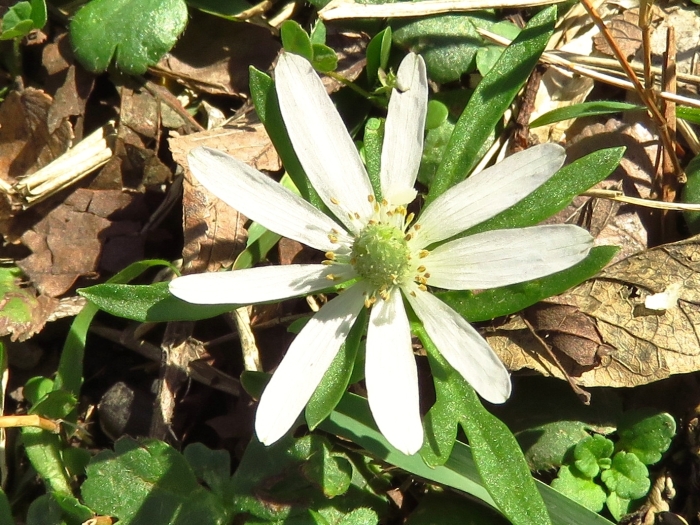Tenpetal Thimbleweed
(Anemone berlandieri)
Tenpetal Thimbleweed (Anemone berlandieri)
/
/

(c) Annika Lindqvist, some rights reserved (CC BY)
CC BY 4.0
Image By:
(c) Annika Lindqvist, some rights reserved (CC BY)
Recorded By:
Copyright:
CC BY 4.0
Copyright Notice:
Photo by: (c) Annika Lindqvist, some rights reserved (CC BY) | License Type: CC BY 4.0 | License URL: https://creativecommons.org/licenses/by/4.0 | Uploader: Hyperik | Publisher: Wikimedia Commons | Title: Anemone_berlandieri_imported_from_iNaturalist_photo_6398484_on_9_January_2020.jpg | Notes: ''[[Anemone]] quinquefolia'' - US NPS photo |





















































Estimated Native Range
Summary
Anemone berlandieri, commonly known as Tenpetal Thimbleweed, is a semi-deciduous perennial herb native to open woodlands, prairies, plains, and grasslands in the Southeastern United States, particularly Texas, and extending into Northeast Mexico. It typically grows to a height of 0.5 feet (0.15 meters) and a width of 0.3 feet (0.09 meters). This plant features a basal clump of lobed leaves and produces showy white flowers with a greenish center, each consisting of ten petal-like sepals, during the late winter to spring months.
Tenpetal Thimbleweed is valued for its early-season blooms and its ability to naturalize in suitable conditions, making it a charming addition to wildflower gardens, rock gardens, and borders. It is relatively low-maintenance, requiring medium amounts of water and thriving in soils with medium drainage. While it prefers full sun or part shade, it is adaptable to a range of light conditions. Gardeners should be aware that this plant can be susceptible to leaf miners and powdery mildew. It is not known for being invasive and is generally well-behaved in the garden setting.CC BY-SA 4.0
Tenpetal Thimbleweed is valued for its early-season blooms and its ability to naturalize in suitable conditions, making it a charming addition to wildflower gardens, rock gardens, and borders. It is relatively low-maintenance, requiring medium amounts of water and thriving in soils with medium drainage. While it prefers full sun or part shade, it is adaptable to a range of light conditions. Gardeners should be aware that this plant can be susceptible to leaf miners and powdery mildew. It is not known for being invasive and is generally well-behaved in the garden setting.CC BY-SA 4.0
Plant Description
- Plant Type: Herb
- Height: 0.5-1.5 feet
- Width: 0.1-0.3 feet
- Growth Rate: Moderate
- Flower Color: White, Purple, Blue
- Flowering Season: Winter, Spring
- Leaf Retention: Semi-Deciduous
Growth Requirements
- Sun: Full Sun, Part Shade
- Water: Medium
- Drainage: Medium
Common Uses
Deer Resistant, Groundcover, Low Maintenance, Rabbit Resistant, Showy Flowers
Natural Habitat
Open woodlands, prairies, plains, and grasslands
Other Names
Common Names: Ten-Petal Anemone
Scientific Names: , Anemone berlandieri, Anemone caroliniana, Anemone heterophylla, Anemone decapetala var. heterophylla, Anemone caroliniana var. heterophylla,
GBIF Accepted Name: Anemone berlandieri Pritz.